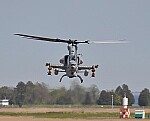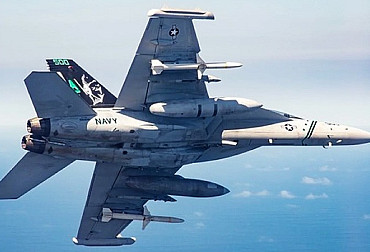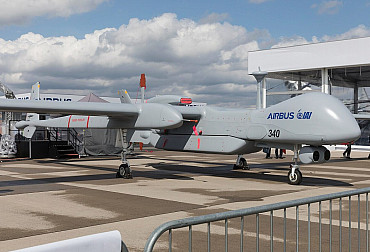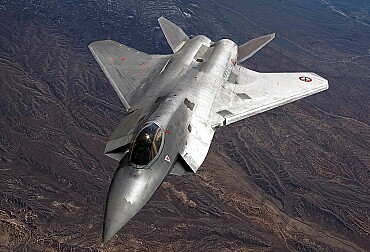The first Tigre helicopter upgraded to MK2 standard has been delivered to the French Army
The Tigre is a twin-engine reconnaissance and attack helicopter. It is used for reconnaissance, attack, destruction, interception, escort and collection missions, day and night, and is highly flexible in its use. With its high speed (250 km/h), the Tigre has a range that can vary from 2h30 to 4h00, depending on the chosen configuration. It is armed with a 30mm cannon (range of 2,500m), 68mm rockets (range of 4,000m), Mistral missiles (range of 6,000m) or Hellfire missiles (range of 8,000m).
Designed to equip the French army's air-mobile formations, the Tigre is also capable, in its support-protection version, of engaging and destroying helicopters, slow-moving aircraft and drones, day and night and in poor visibility. The Tigre helicopter is an example of Franco-German cooperation; developed jointly, it is a proven success both in training and in operations. This new standard, adopted by the 2019–25 military programming law, includes the replacement of the avionics and the modernisation of the weapons system with the integration of a new air-to-ground missile, the AKERON LP, CONTACT and a new air-to-air missile, the MISTRAL 3 (which will replace the MISTRAL 2).
The Tigre will have new networked combat capabilities thanks to its connection with the SCORPION system and its direct communication with UAVs. It will also be able to benefit from the European Galileo satellite positioning system, in addition to the American GPS. The Tigre is expected to remain in operational service beyond 2050.
Dimensions:
- 15.83 metres long
- 4.33 metres high
- 1.10 metres wide
- empty weight: 4.2 tonnes
- maximum take-off weight of 6.1 tonnes for the HAP Tigre.
Performance:
- Autonomy with/without additional tank under wing: 4h/2h40
- Maximum speed: 175 kts
- Cruising speed: 140 kts
- Range without fuel tank: 340 Nm
- Range with fuel tanks: 550 Nm
- Operating temperature range: -30° to +45°
- Maximum operating altitude: 13500 ft
The EC665 Tigre attack and reconnaissance helicopter fleet of the French army's light aviation arm (Aviation légère de l’armée de Terre , ALAT) is the subject of two separate industrial operations. The first, decided in 2015, involves upgrading the aircraft delivered in the HAP (support and protection) version to the HAD (support and destruction) standard. However, not all of the 40 aircraft concerned have yet been modified. According to the Annual Performance Plan for Programme 146 Forces Equipment appended to the 2025 Finance Bill, this operation should be completed in 2026.
At the same time, the HAD Tigres will be modernised to Mk2 standard. This operation was the subject of a contract awarded by the Organisation for Joint Armament Cooperation (OCCAr) to Airbus Helicopters and TDA Armements in December 2016. At the time, the OCCAr explained that this modernisation would involve the integration of the 68mm ACULEUS laser-guided rocket, with sub-metric accuracy and a range of around 6 kilometres, a TopShield controlled radiation pattern antenna (CRPA) and a new GPS receiver that is insensitive to electronic jamming. According to the planned schedule, deliveries of the Tigre HAD Mk 2 to the ALAT were due to start in 2020 and be completed three years later. These deadlines could not be met. For example, the technical-operational trials of the HAD Tigre Mk2 were not completed until October 2021. However, this did not pave the way for deliveries of the modernised helicopters to the ALAT. It was only on 24 October that the first Tigre HAD Mk2 was handed over to the Ministry of the Armed Forces under the aegis of the OCCAr.
"The successful delivery to France was completed within the framework of a retrofit programme managed by the OCCAR Tiger Programme Division. The HAD-F upgrade to MkII brings significant operational improvement to the Tiger HAD, enabling it to retain its full relevance in the field. In particular, it incorporates the new laser-guided rocket, a new jamming-resistant GPS system and an IFF mode 5 for interoperability. This version also enables the Tiger to integrate the French Army Aviation digitisation bubble and operate in a network with the surrounding helicopters. This first acceptance marks the start of the modernisation of the French Army's fleet of 67 combat helicopters, which will continue with the Mid-Life Upgrade Programme to MkIII for France and Spain," commented the OCCAr in its press release.
In reality, we should be talking about the Mk 2+ standard, given that the stated ambitions for this mid-life modernisation of the Tigre have had to be scaled back, as Germany has withdrawn from the programme. On the French side, only 42 aircraft will be involved. This Mk 2+ standard (Tigre RMV) will notably aim to integrate the ALAT SICS (Scorpion combat information system), the CONTACT radio and a UAV-helicopter cooperation capability.
The German Government has decided in 2023 not to participate in the Airbus Helicopters Tiger MkIII programme and to withdraw the Bundeswehr’s Tiger (The KHT: Kampfhubschrauber Tiger) combat helicopter from service in 2038. The Bundeswehr currently has 55 Tiger combat helicopters, for which the planned end-of-service date is set for 2038. For operation beyond this date the German Government would have had to join the MkIII Midlife Upgrade Programme, under which the Spanish and French armed forces are planning to upgrade their Tigers.
The plan was even accelerated in January this year when the German Federal Ministry of Defence has unveiled its plans for the phased retirement of the Airbus Tiger combat helicopters currently in service with the Bundeswehr. The final units are set to conclude their service by 2032. This downsizing will be executed gradually over the next few years, with the aim of reaching 33 operational units by 2028. Some helicopters were slated to remain operational until 2038, but economic considerations have prompted an acceleration of the retirement schedule.








